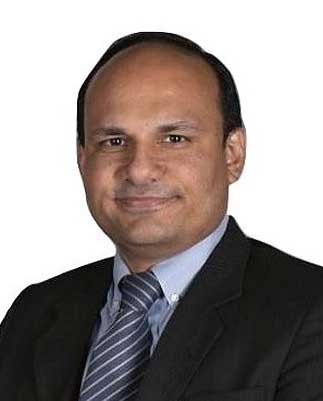Solar energy and the renewables
With the UN sponsored global push to address the climate change and the decarbonization of the planet, lately there have been concerted efforts to switching to the renewable and clean energy sources. During the COP26 summit in last November in Glasgow, Scotland, 120 world leaders made a global commitment to reach to NetZero carbon by 2050.To reach that goal, fossil fuels will be replaced by the renewable and other non-hydrocarbon energy sources and LNG was identified as the transitional fuel to reach that target. Since the COP26, the transformation to renewables, particularly Solar PV over the fossil fuels has been accelerated particularly in the GCC region. Besides the developed nations adoption of the renewables on priority basis, the same trend is also picking up its momentum in the emerging economies.
There are many proven renewables, like solar, wind, hydro, thermal, nuclear, etc. that many countries are already using the min their journeys to carbon footprint reductions. Among these renewables, solar energy standout as the most affordable option at the consumer levels. With the advancements in the PV technology, not only the efficiency but also the cost of the PV panels has come down significantly. During the oil embargo of the 1970s, solar energy became popular but at a costof $100 a watt, it was not sustainable and thus it lost its appeal once the oil supply from the OPEC was resumed.
According to the Department of Energy (DOE), for the residential consumers in 2010, solar energy cost was 52c/kWh and by 2017 it dropped down to16c/kWh. During the same period, utility Solar energy costs came down to 6c/kWh from 28c/kWh. With the continued technological breakthroughs in thesolar-PV efficiency and economy of scales of the PV panels production to meeting the higher global adoption rates, the costs will continue to come down further. Based on these facts, the DOE is projecting that by 2030 electricity cost for the utilities will be just 3c/kWh, making solar the cheapest source of energy!
China is the leader in the PV technology and mass production of the PV panels. Many other countries, including S. Korea, USA, India, Australia are also making good strides in this space.
Currently, China has over 300GW (over 42% of world) of installed solar power capacity, USA has just over 97GW (enough to power eighteen million homes), Japan about 70GW, Germany about 55GW, and India about 40GW.
According to the International Renewable Energy Agency (IRENA), during the COVID-19 crisis the renewables have shown remarkable resilience. The renewable derived electricity has proven not only the most reliable but also having the lowest operating costs. The decarbonization of the power generation through the renewables substitution will continue to accelerate as more governments along with the private sectors push this agenda through their countries.
The fossil fuels producing countries from the Middle East equally share the concerns of the climate change and diligently working to mitigate their carbon footprint by increasing the share of the renewables in their total energy mix. The GCC members are investing heavily in the green energy to beat the NetZero target of 2050. They are building new mega cities from ground up that will be 100% carbon neutral from the very beginning and self-sustaining in all aspects to providing the ideal living, playing, and working environments for their citizens. In this respect, Kingdom of Saudi Arabia, the leader of the OPEC and the largest oil supplier, is taking lead by building one of the largest solar villages that will be more than sufficient for supplying power for the brand-new city, ‘Neom’ that is targeted to get completed as part of Saudi Vision 2030! Under the Saudi Green Initiative (SGI) that was announced prior to the COP26vevision, 50 per cent of the kingdom’s energy requirements will come from renewables by 2030.
Under the Middle East Green Initiative (MGI), the region will increase its share of the clean energy many folds from its current level of 7%.The UAE is also following a similar journey for 2050 NetZero destination by adding clean energy sources in its current energy mix for its robust lifestyle and top tourists’ destination, including the residencies for the rich & famous people of the world. They are building a power park that is expected to reach to 14% of the clean energy supply by the end of 2022 and with the planned capacity additions, Mohammed bin Rashid Al Maktoum Solar Park will be the largest single solar energy site with a capacity of 5000MW electricity by the year 2030. According to the officials, this is all part of the vision of His Highness Sheikh Mohammed bin Rashid Al Maktoum, Vice President and Prime Minister of the UAE and Ruler of Dubai, to provide an advanced infrastructure that contributes to consolidating Dubai’s position as a preferred destination for living, working, investing, and visiting. According to DEWA utility’s MD & CEO, Mr. Saeed Mohammed Al Tayer, this approach is also consistent with the strategy to diversifying Dubai’s clean and renewable energy sources to include all available technologies to achieve His Highness dynamic leadership’s vision for a “brighter and more sustainable future for generations to come.”
Similarly other GCC members, Oman Bahrain, and Kuwait, they are all doing their part by rolling out clean energy programs to reach NetZero target of 2050.
Under the leadership of His Majesty, Sultan Haitham bin Tariq, Oman as part of its vision 2040has embarked on an aggressive renewables Initiatives for diversifying its current energy mix. Solar energy will make the power supply carbon free source thus making the environment sustainably healthy for the generations to come. As part the Vision 2040, Oman will be getting 39% of its total energy mix from the renewables.
Similarly, Qatar has committed to meet 20% of its energy demand from renewable sources by 2030. Currently, Qatar is installing 1000 KW capacity solar park scheduled to complete by the year-end. There are several other Solar-PV projects underway with additional several thousand MW capacity.
Bahrain has also set robust renewables goals and is targeting by 2035 to have 15% of its power through the renewable sources, but mostly from the solar-PV source. Bahrain has some of the highest solar radiation levels in the world, along with good wind speeds. Local agency reports that on average Bahrain gets 9.2 hours/day of sunlight. According to the Gulf Research Centre, Bahrain has potential to generate around 33 TWh a year from solar power.
Like the other GCC countries, Kuwait has also embarked on an aggressive plan for the decarbonization of its power supply through the renewables as the priority in its energy mix. It is targeting to generate 15% of its electricity from clean energy by 2030. As part of the strategy, it is building a solar-PV farm with 5GW capacity.
This overall progress looks very promising, and it clearly shows that even during the Covid-19 pandemic, the collective efforts did not slow down for reverting the climate change, and planets temperature rise. With the pandemic getting behind us, the addition of the renewables in the energy mix will continue to accelerate with time as more resources (funding & technologies) are allocated for the decarbonization on local, multilateral, and international levels. Soon, a time will come when we all will be breathing cleaner air, having solar power for industrial activities, transportation, lighting, heating, and cooking, encountering less severe weather conditions, and having ample food supplies for everyone on the planet. Most importantly, we will leave the planet in a better shape than today for the generations to come!






